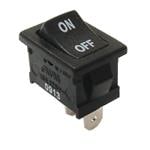Jetson Orin Super Mode: NVIDIA performance boost for Syslogic rugged computers
NVIDIA has introduced a significant performance upgrade for its Jetson Orin Nano and Jetson Orin NX System-on-Modules (SoMs). With the latest software update, additional performance reserves are unlocked, providing developers with new possibilities. Syslogic’s rugged embedded computers also benefit from this advancement.
With the release of JetPack SDK 6.2, NVIDIA has enabled a new power mode for the Jetson Orin Nano and Jetson Orin NX SoMs. This enhancement is now integrated into Syslogic's A4NA and A4NX series rugged AI computers, which ship with Super Mode enabled.
Increased performance for advanced AI applications The performance boost enables demanding computer vision and inference tasks to be performed more efficiently. All of the SoM's core processing units benefit from the increased performance. Thanks to the new firmware, the GPU with its Tensor Cores now operates at up to 1,020MHz on the Orin Nano (previously 635MHz) and up to 1,173MHz on the Orin NX (previously 765MHz). This results in a significant increase in GPU performance to 67 TOPS for the Nano and 157 TOPS for the NX. NVIDIA has also increased the CPU clock speed of the Orin Nano from 1.5GHz to 1.7GHz.
Engineered for extreme environments
Syslogic's rugged computers, including the RS A4NA, RS A4NX, and RML A4NX, are designed for use in harsh environments. With IP67 and IP69 certified housing, they offer protection against moisture, water, and dust. To ensure exceptional durability, Syslogic integrates the Jetson Orin Nano and Jetson Orin NX modules with a specially designed carrier board, optimising the systems for resistance to shock and vibration. In addition, the edge computers are designed to operate reliably in extreme temperatures ranging from -40 to +70oC.
Syslogic rugged computers are widely used in demanding applications, including autonomous mobile robots (AMRs), automotive systems, trucks, buses, specialised vehicles, as well as construction and agricultural machinery. Depending on the application, the devices can be configured with various interface options, making them ideal for computer vision and sensor fusion applications.







